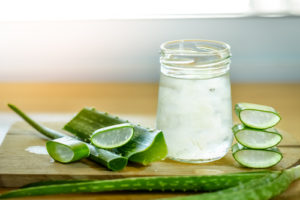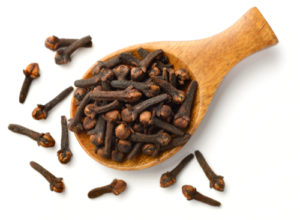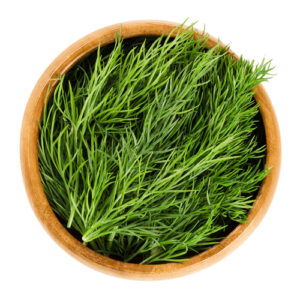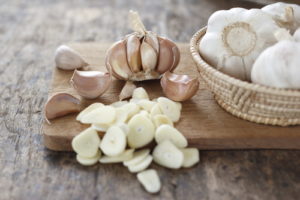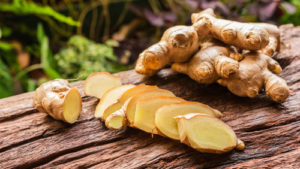by Amy S.

Pain is, sadly, one of the signs of life. However, this does not change the fact that it is still an unwanted occurrence, no matter if it comes from a trivial source or something very serious. In either of these alternatives and everything in between, any person desires to have something that can resolve that pain. Today, the modern pharmaceutical industry created numerous options for the same purpose, but anyone who is of a prepper and survival mentality knows that these are not reliable tools in an emergency.
History already shows that there are many moments when disasters struck – either man-made or natural – in which the regular state of society breaks down. The same occurrence takes most elements of the safe, contemporary society and leaves the people to fend for themselves. The same applies to medicine and any industrially-produced remedy for pain. Something similar can occur even on a personal level. An individual lost in the woods or some other part of the wilderness cannot count on finding a pharmacy if they experience pain. Yet, the natural environment is full of things, especially plants, that act as natural pain killers.
When someone experiences a small headache, some muscle tension or something else, they quickly reach for acetaminophen, ibuprofen and many other other over-the-counter medications. However, these are one of the first things which disappear in an emergency and not only that – prolonged use of these substances produces internal damage, like intestinal problems, liver damage and much more. Because of all of this, there are numerous reasons to employ natural pain relief methods for any issue a person might experience. With that in mind, here is the list of the best plants for pain relief anyone can find and use.
“The art of healing comes from nature and not from the physician. Therefore, the physician must start from nature with an open mind.”
These wise words come from the Swiss physician, philosopher and alchemist known simply as Paracelsus (1493-1541). Paracelsus taught that the human body was a complex chemical system that had to be balanced with its environment. One way to keep your body in alignment with nature is by using plants to treat common physical ailments.
Whether your passion is emergency preparedness, homestead survival, or you just want to avoid modern medicine with all its side effects, you should check out these powerful plants that can quickly relieve pain.
Aloe Vera
The ancient Egyptians called Aloe Vera the “plant of immortality,” and for good reason. The gel from the Aloe Vera plant contains significant anti-inflammatory and antioxidant properties.
You can use this gel to soothe burns, cuts, scrapes, and even cold sores. When you drink it in juice form, it helps the gastrointestinal tract to function at an optimal level.
Similar to a cactus, the Aloe Vera plant has long serrated edges. A translucent gel is found within the thick fleshy part between the layers of tough skin. Here is how to remove the gel.
- Break off a leaf as close to the stem as possible and place it on a cutting board.
- Then use a sharp knife to slice away both ends and to remove the spiny edges.
- Now, hold the leaf with one hand on the top layer of skin as you slide the knife between the top layer of skin and the gel beneath it. Set that skin layer aside.
- Next, slide the knife between the gel and the other piece of skin as you repeat the process.
You now should have a section of aloe gel that you can apply directly to the skin for pain relief. Another option is to blend the gel with other smoothie ingredients to help relieve indigestion.
White willow bark

Willow bark has been called the original Aspirin because it contains salicin. This is a compound that allows the stomach to convert it to salicylic acid. When in synthetic form, it can irritate the stomach lining, but as white willow bark, it can just as effectively relieve inflammation, pain, and fever. Just one or two doses per day can produce these effects that last 24 hours.
BAY LAUREL (BAY LEAVES)
Scientific Name: Laurus nobilis
Bay leaves have been used for cooking and medicine since ancient times, and bay leaves are reputed to help relieve digestive, muscle and other pains. One study even found that bay leaf essential oil was as effective asmorphine for pain control in mice.
Bay laurel trees are hardy in areas that don’t receive frost. Outdoors, they can reach up to 60 feet (18 meters) tall, or they can be pruned into smaller shrubs or hedges. They also make great indoor plants if you live in a colder climate.
How to Use: You can add fresh or dried bay leaves to your food, brew bay leaf tea, or apply a poultice of either ground bay or bay leaf oil to relieve pain, such as headache, muscle or joint pain.
HOW TO GROW BAY LEAF LAUREL: WHERE TO START
The easiest way to start a bay plant is to buy one from your local garden center if they have them in stock. You can also buy a package of bay laurel seeds online, or take a cutting of a bay plant if they grow in your local area.
As a word of caution, make sure whatever plant or seed you start with is labelled Laurus nobilis. Some plants called similar names, like bay or sweet bay, may be different species that are not edible. And if you’re not sure a cutting is from a true bay laurel plant, get a professional identification before eating it.
If you’re starting your bay laurel from seeds, plant the seeds about 1/8-inch deep (3 millimeters) in a well-draining potting mix in a small pot. Keep it around 70 degrees Fahrenheit (21 degrees Celsius) and water regularly. Germination can be irregular, taking anywhere from 10 days to 6 months.
BASIL
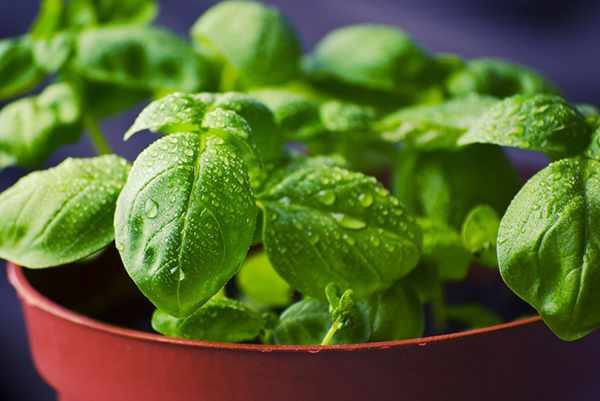
A sacred herb used for peace and happiness at home. There are over 60 varieties: sweet basil like genovese or pistou, purple basil like Rubin basil, flavored basil like lime basil or Thai basil. It is used to sharpen the memory, combat colds, flu and the herpes, eliminate infections, remove phlegm from your bronchial tubes, relieve mucus in asthma, has antibacterial properties and it is an anti-stress agent. Tasting like anise, basil is a plant rich in carotenoids, such as beta-carotene, which protects cells from adverse effects of free radicals and prevents the oxidation of cholesterol on blood vessels. Thus, basil reduces the risk of atherosclerosis and heart attack. Because of the magnesium compounds, basil relaxes the muscles and the blood vessel and thus is recommended for maintaining the cardiovascular system healthy, improving blood circulation. Basil is effective for the whole immune system because it destroys bacteria that allows the development of viral infections, colds, flu and herpes.
How to use:
Tea:
- 10-12 leaves washed and crushed and a teaspoon of ginger rake fry in a skillet over low heat until the leaves soften. Add a cup of water and boil for a few minutes. Add a teaspoon of honey and drink 3 hot teas a day, through rare sips, after the main meals.
How to grow:
Growing Basil is relatively easy as long as the growing environment has suitable light and temperature levels. For optimal growth, basil should receive 6 or more hours of direct sunlight a day. Check your soil for moisture every other day to determine whether or not your basil needs some watering. If your soil is dry, water at the base of the plant until the soil is wet to a depth of about 1½ inches. You can start by planting yourself or buy it.
Boswellia

This plant is also known as Indian frankincense and it comes with active components that help in reducing pain and inflammation. The same plant can be used either as a digestible supplement, which means being eaten, or it can be applied like a gel or creme locally.
Bromelain

Bromelain is a type of enzyme that is regularly found in the pineapple – mainly in its stem and juice. It is used to reduce the occurrence of swelling and is proven to be very effective in the sinuses. Many individuals who struggle with knee and joint problem, as well as arthritis also found bromelain effective.
Capsaicin

This compound is derived from hot chili pipers and it can locally reduce muscle, joint, and nerve pain by stopping a transfer of chemicals from the painful place to the brain. This substance cannot be used constantly, but when applied several times per day, it does effectively regulate pain.
CHAMOMILE

Scientific Name: The two most common varieties of chamomile are German chamomile (Matricaria recutita) and Roman chamomile (Chamaemelum nobile).
The flowers of both German and Roman chamomile are recognized for their pain-relieving properties. Certain chemical compounds in chamomile penetrate below the skin surface into the deeper skin layers, which researchers suggest may help relieve localized inflammation.
Chamomile is very easy to grow. Roman chamomile is a perennial, whereas German chamomile is an annual. But German chamomile will often reseed and come back the next year, so both varieties can be treated like perennials. They’re tough plants that grow best in a sunny location without any added fertilizer and minimal water.
How to Use: Chamomile tea is a classic way to consume this herb. It can also be applied as a poultice to an inflamed or painful area, or the flowers can be tossed into a salad or other dish as a fresh or dried garnish.
Take a look at this collection The Lost Book Of Remedies, taken word for word out of a circa 1845 manual.
What is The Lost Book of Remedies? The Lost Book of Remedies PDF contains a series of medicinal and herbal recipes to make home made remedies from medicinal plants and herbs. Chromic diseases and maladies can be overcome by taking the remedies outlined in this book. The writer claims that his grandfather was taught herbalism and healing whilst in active service during world war two and that he has treated many soldiers with his home made cures.
Cloves
Cloves have analgesic and antibacterial properties that make them useful as a numbing agent for toothaches and gum pain. Here’s how to use them.
- Crush a few whole cloves before mixing them with an equal amount of cayenne pepper powder in a small bowl.
- Add just enough water to make a thick paste.
- Roll a cotton ball or a cotton swab into the mixture and apply the cotton directly to the affected area of the mouth.
As your saliva mixes with the paste, you will notice a numbing effect that eases pain and discomfort.
Devil’s Claw

According to many recent research papers, devil’s clawwhen taken orally work on the same level as many non-steroidal anti-inflammatory drugs. Its main focal point is joint and muscle pain, so people with osteoarthritis have been using it successfully for years either with or without regular pain killers.
FENNEL
Scientific Name: Foeniculum vulgare

ennel seeds contain 16 analgesic and 27 antispasmodic chemicals, which are known to help with pain relief. The volunteers in one study reported that fennel seed extract reduced their pain levels nearly as much as aspirin. Fennel seed extract has also been found to help menstruation pain.
Fennel can be grown as an annual. The fresh bulb is tasty when used as a vegetable. Although, the seeds are primarily used for medicinal purposes, so let some of your fennel plants go to seed and harvest the seeds when mature.
How to Use: You can make fennel seed tea, eat the seeds directly, or add them to baking or cooking. It’s recommended to be cautious about consuming fennel if you’re pregnant or nursing because of the herb’s estrogenic activity.
ROSEMARY
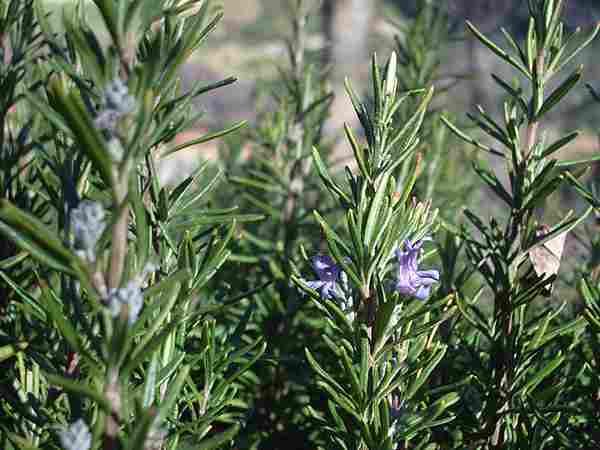
Rosemary has long been believed to have memory-enhancing properties, it contains diterpene which has neuroprotective properties that may protect against Alzheimer’s disease as well as the normal memory loss that occurs with aging. Remarkably even the smell of rosemary has been found to improve memory. In addition, rosemary boosts concentration. It’s also used for muscular aches, hair growth, poor circulation, digestion, anti-dandruff and scalp nourishment, mood elevator, migraine relief, pain relief, immune booster, anti-inflammatory, antibacterial, fresh breath, liver detoxification.
How to use:
Powder:
– The plant will be finely ground. Usually, a teaspoon of powder is taken 4 times a day on the empty stomach. Keep it under the tongue for 10-15 minutes, then swallow with water. The powder should not be stored for more than 7 days as its properties are altered.
How to grow:
Rosemary is easiest to grow from a cut leftover, rather than planting seeds. Visit a community garden and ask for a cutting, or ask a friend for a cutting of their plant. The best time to do this is in late spring, but if you live in a warmer climate, this can be done during early autumn as well. Strip the leaves off one inch from the bottom of the stem. Before planting the rosemary, strip the leaves off of the lower section of the cutting (about an inch from the end of the stem). This part of the plant will go into the soil. Water rosemary infrequently. Rosemary prefers a drier soil, so don’t overdo the watering. It will be happy with the average garden watering. It likes to source most of its water from rain. And don’t worry about fertilizing. This is not a herb that needs it.
FEVERFEW
Scientific Name: Tanacetum parthenium

Feverfew has long been used for relieving headache and migraine pain, as well as other acute and chronic pain. This is due in part to feverfew’s anti-inflammatory properties. One study found that eating fresh or dried feverfew leaves daily helped prevent migraine headaches.
Feverfew is naturally a short-lived perennial, although it reseeds well and can easily establish itself in most gardens. You can start feverfew from seed and grow it indoors, or outside in a sunny location.
How to Use: Try adding fresh or dried feverfew leaves to your meals daily for prevention of migraines or other pain. But make sure to add them at the end of cooking because boiling can break down the natural pain-fighting compounds. Brewing tea is fine, as long as you don’t actively boil the tea. Just pour on boiling water and let it sit for a few minutes before drinking.
SAGE
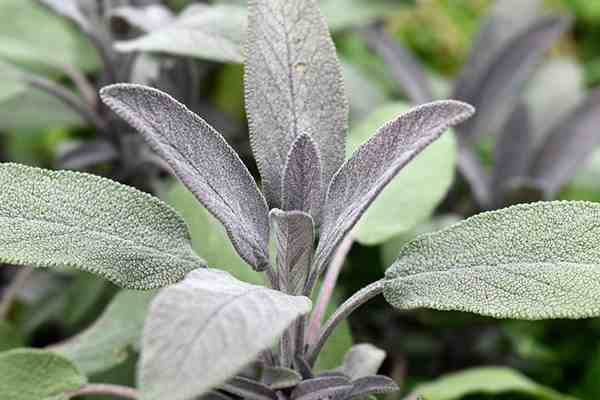
The leaves should be collected shortly before or just at the beginning of flowering. Leaves can then be dried, but not above 95°F. Sage can be taken internally as either an infusion, tincture, or gargle. The leaves of Red Sage are often used to aid inflammation of the mouth, throat, and tonsils as its volatile oils are soothing to the mucous membranes. It can be used internally as a mouth wash to treat gingivitis, inflamed tongue (glossitis), and other mouth inflammations including mouth ulcers. It can also be gargled to treat laryngitis, pharyngitis, and tonsillitis. Furthermore, it reduces sweating when taking internally. Externally it is used to treat wounds. Do not take Sage if you are pregnant or wishing to breastfeed. When taken internally, it can reduce breast milk production and stimulate the muscles of the uterus.
How to use:
Infusion:
– pour a cup of boiling water onto 1-2 teaspoons of leaves and let infuse for 10 minutes. Drink this solution up to three times a day.
How to grow:
A lot of your success in growing sage is because of what you don’t do. Don’t over-water your sage plants. They only need to be watered at all during dry spells. And don’t over-fertilize them. Sage plants don’t really need much fertilizer. Over-fertilizing makes them grow faster but they have a weaker flavor, defeating the purpose of growing it.
Dill
Commonly used to flavor deviled eggs and vegetable dishes, dill also can be used for medicinal purposes. A natural diuretic, dill has properties that can help ease anxiety, insomnia, hiccups, menstrual cramps, and digestive disorders.
You can make a dill powder by simply grinding up the seeds. For ailment relief, take a teaspoon of the powder twice a day for up to 21 days. For best results, hold the powder under your tongue for about 10 minutes.
You can make dill tea with two teaspoons of mashed dill seeds per cup of hot water. Let the seeds steep for about 10 minutes until the tea has a yellow color. Use a filter to remove the seeds, then sip the tea.
LAVENDER
Scientific Name: Lavandula species

Many different varieties of lavender have been used medicinally for centuries throughout southern Europe, the Middle East and Asia. In modern times, research has shown that lavender aromatherapy can provide significant pain relief. For example, research found that inhaling lavender oil dropped on a face mask reduced the demand for opioids and other analgesic drugs in postoperative patients.
Lavender is a hardy perennial in UDSA zones 7 and up. It can be grown as an annual or indoor plant in colder climates. It grows well from seed and can tolerate some drought.
How to Use: Many studies found that inhaling the scent of lavender was especially helpful for pain relief. You can use lavender essential oil for this, or dry fresh lavender and use it in sachets or hang bunches around your home for the scent. Inhaling lavender tea while you drink it can also be beneficial.
THYME
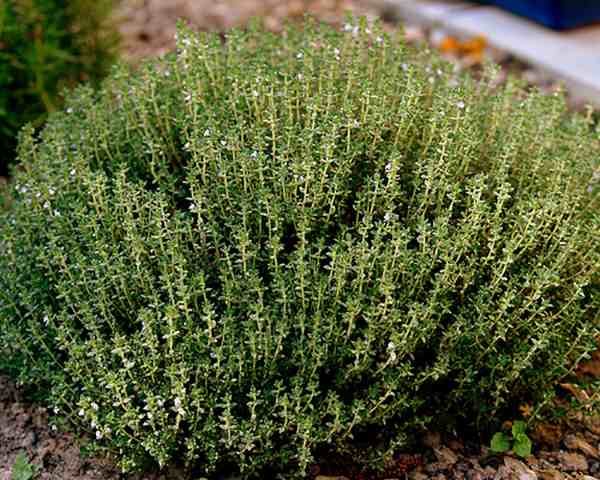
Thyme contains an essential oill that is rich with powerful antispetic, antibacterial and strong antioxidant properties. It is used in mouthwashes to treat inflamation of the mouth and throat infections. Thyme possesses expectorant and antispasmodic properties, making it useful in the treatment of bronchitis, whooping cough and inflamation of the upper respiratory tract.
How to use:
Infusion:
– put 2 teaspoons of dry and crushed herb in 250 ml boiling water and leave to cover for 10 minutes. Drink one cup a day, divided into 2-3 replicas, for one week.
How to grow:
Thyme can tolerate indirect light, which makes it perfect for the kitchen herb garden. The best results will be found when thyme is planted where it receives six hours of daylight. Once the thyme has been planted, place the container in a southern- or western-facing window if possible. A good mix of sand, potting soil, peat moss and perlite will provide adequate nutrients and drainage.
OREGANO
Scientific Name: Origanum species

Oregano has a few different varieties, but all of them contain anti-inflammatory compounds shown to help reduce pain, including carvacrol and thymol. Research has also found that oregano oil penetrates the skin, so you can rub it on joint and muscle pain for relief.
Oregano is a hardy perennial in zones 5 and up, depending on the variety. It can also be grown indoors. Many attractive cultivated varieties are available, but if you want to use oregano for pain control, look for the least-cultivated species. Research has found that wild, uncultivated varieties contain the highest amounts of carvacrol and thymol.
How to Use: Oregano is easily added to a variety of dishes or teas. You can also try applying an oregano poultice to an inflamed area.
Garlic
The ancient Greek physician Hippocrates, known as the Father of Western Medicine, prescribed garlic to treat many medical complaints. The ancient Egyptian, Babylonians, Greeks, Romans and Chinese civilizations also favored garlic for medicinal uses.
Consuming garlic can boost the immune system and it has both antioxidant and anti-inflammatory properties that may help ease arthritis and back pain.
To use garlic topically, you can crush about 10 fresh garlic cloves to make a paste. Apply the paste on the affected area, cover with a clean cloth and then leave in place for about 30 minutes.
Although cooked garlic still has health benefits, it is most effective in its raw state. Try adding raw garlic to homemade salad dressings, marinades, tomato sauces, soups and stews. Whether you’re using garlic raw or cooked, you can boost its benefits by first chopping or crushing it and then letting it sit for 10 minutes before either eating it as is or cooking it.
CHIVES
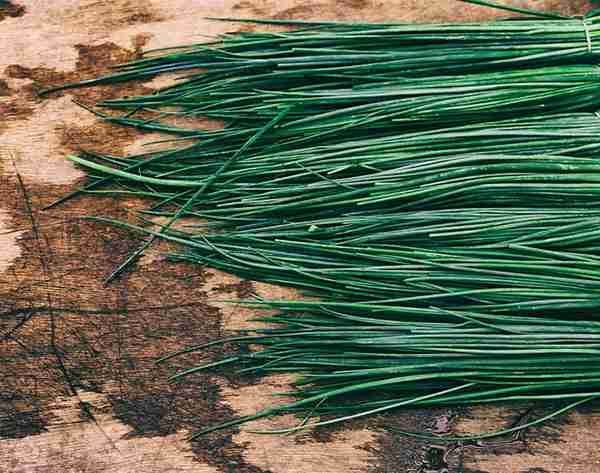
Chives have a mild anti-inflammatory effect which can reduce the risk of rheumatoid arthritis. It is rich in vitamin C which helps support the immune system. Vitamin E also has antioxidant properties that strengthen the immune system. Also possess antibiotic properties. The natural antibacterial and antiviral agents present in chives work with vitamin C to destroy harmful microbes and certain yeast infections.
How to use:
Juice:
– can be applied to wounds to treat fungal infections.
How to grow:
It is best to start growing your chives from seedlings instead of seeds so that you can enjoy quicker results. When planting your chive seedlings, you want well drained and nutrient-rich soil. Chives will flourish quickly in a full sun spot, but if you only have partial sun they will survive, they just won’t grow as quickly. When planting your chive seedlings, you want them to be 8-10 inches apart so they have room to stretch.
Ginger
The root of the ginger plant has anti-inflammatory properties that make it useful in treating headaches. muscle aches and overall body soreness. As a natural remedy for nausea, ginger help many women handle the uncomfortable waves of morning sickness that can come with early pregnancy.
To make ginger tea, grate about two inches of fresh raw ginger into a two-cup glass measuring cup. Then, pour boiling water to the 1-1/2 cup line. Let the tea steep for 10 minutes before straining it into a mug and adding honey or sugar to taste.
WILD OPIUM LETTUCE
Scientific Name: Lactuca virosa

Wild opium lettuce is a common weed in many parts of the world. It’s been used as a pain reliever since ancient Egyptian times. Research suggests that the sap of wild opium lettuce contains pain-relieving compounds that act similarly to ibuprofen. Although, toxic side effects have been experienced with wild opium lettuce, so research how much you can safely consume before experimenting with this plant.
You can grow wild opium lettuce from seed. You can also collect it from the wild if it grows near you, but make sure you know how to identify it correctly first. Practical Self Reliance has some excellent details on how to identify wild opium lettuce, as well as other precautions to take into account.
How to Use: The sap of wild opium lettuce is the most medicinally active part, so eating fresh leaves and stems would potentially be the most effective for pain control, or extracting the sap to consume.
PEPPERMINT
Scientific Name: Mentha x piperita

Peppermint oil has been shown to help with digestive pain, such as irritable bowel syndrome, due to its ability to relax muscles. It can also help reduce headache pain when applied on the forehead, or fibromyalgia pain. Many studies have used peppermint essential oil, but using the leaves directly is another option.
Peppermint is a vigorous, perennial plant that spreads quickly. If you’re planting it in your garden, it’s recommended to plant it in a large pot sunk in the ground to prevent it from spreading. It does best in moist, rich soil and it can be harvested anytime throughout the growing season.
How to Use: Peppermint makes a unique addition to sweet or savory dishes, and peppermint tea is a classic drink. A peppermint poultice of crushed, fresh leaves can be applied to a headache or other painful area. Peppermint essential oil can also be applied to painful regions, but always mix it half and half with a neutral oil before putting it on your skin.
